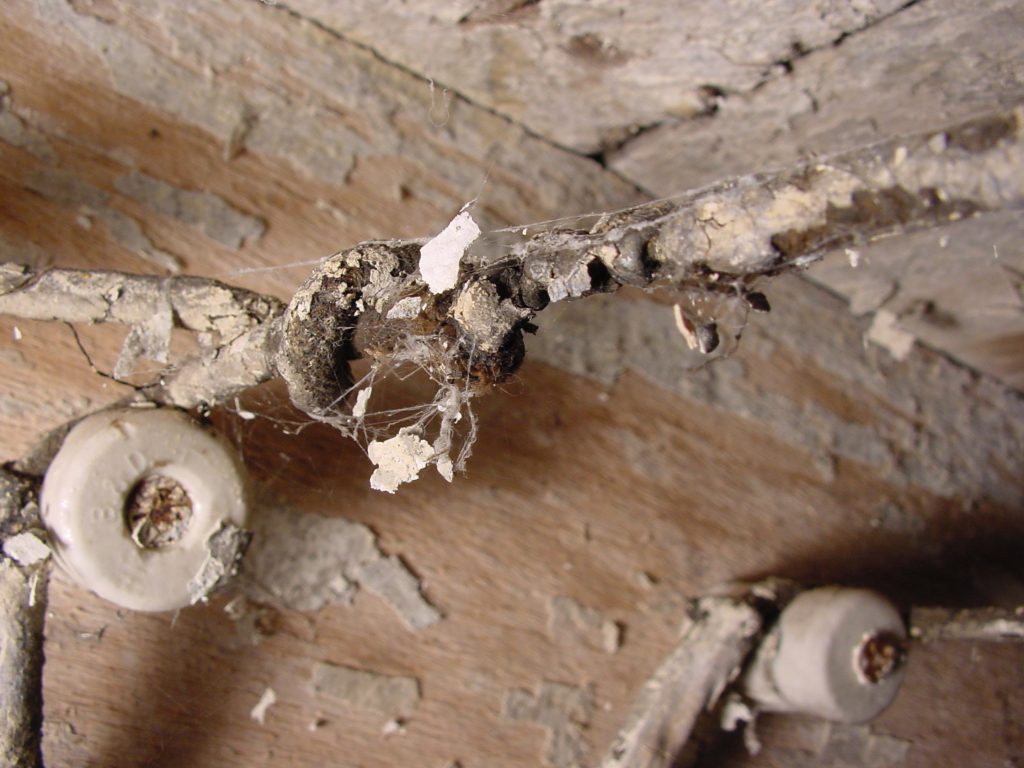The insurance inspector wasn’t smiling as he came up from the basement of the 100-year old brick home you just bought, but it didn’t mean much until he started to talk. “I’m sorry”, the guy said, not looking particularly sorry at all. “We can’t extend a homeowner policy to you. There’s knob and tube wiring in this place and you’ll need to upgrade the entire electrical system before we can offer you insurance coverage.”
- Reading time = 6 minutes

Denial of insurance is the stuff of nightmares for some people moving into older homes or looking to sell one, and it’s even affecting people with existing insurance policies up for renewal. As knob and tube wiring (also called “open wiring”) becomes more of a technical issue, understanding the nuts and bolts of the technology and how to deal with it is essential for owners of older places. Like most things in life, a little insight goes a long way.
“Knob and Tube” Electrical Systems
“Knob and tube” is a generic term that describes a system of residential wiring installed between 1900 and the 1940s in both city and country homes. It was leading edge technology at the time, but is now regarded as too risky and dangerous to be insurable by some companies. Understanding knob and tube wiring can help you weigh your options and make the best possible decisions, both before you buy or after you’ve found out you’ve got knobs and tubes in your home.
- Knob and tube wiring was used at a time when the electrical industry hadn’t yet developed the kind of highly effective, synthetic wire insulation materials we have now. Physical separation providing electrical insulation.
- While modern electrical cables are actually bundles of wires separated by layers of flexible plastic, older knob and tube conductors are usually single wires covered in a cloth-based sheath.
- These conductors run separately, in parallel pairs, supported by porcelain tubes and knobs where they travel through and over wooden framing members. It’s the air space between wires that delivers most of the insulating value.
- The marginal nature of the old insulation meant that conductors needed to be separated physically to prevent them from shorting out, and it’s this unique feature that makes knob and tube systems easy to identify.
Is Knob and Tube Wiring Safe?
When knob and tube wiring was installed correctly, and when it hasn’t been tampered with, it’s still considered safe by some inspection authorities and insurance companies. The issue for insurance companies who stay away from knob and tube policies mostly comes down to not always being able to easily assess all knob and tube wiring in a house because it’s buried inside walls. Although wiring practices have advanced a lot since knob and tube was cutting-edge, existing systems are still permitted to remain in place and operational for lighting and wall outlets if they meet the following conditions as laid out by electrical codes. The usual details typically apply:
- Circuits must be protected by a 15 amp fuse or circuit breaker
- No additional outlets can be added to the original installation
- Exposed conductors must be in good physical condition

Although this is good news, it doesn’t necessarily mean you’re eligible for insurance coverage from every company in the business. In fact, individual insurance firms can and do refuse coverage for homes with knob and tube wiring as they see fit. And the reasons cited certainly have some merit.
- Knob and tube systems were designed to supply much lighter electrical loads than we consider essential today. They’re usually part of electrical services rated to provide just 60 amps of total current in a home. When you realize that simply toasting a couple of slices of bread while heating a kettle of water in the morning demands about 30% of this capacity, it’s obvious how easy it is to overload old electrical systems.
- Another area of concern is the fact that knob and tube wiring systems aren’t grounded. They never were. Even if they’re in perfect working order, these old circuits don’t include the kind of third circuit wire that’s now a code requirement for new electrical installations. All else being equal, grounded circuits are safer than non-grounded ones because they dramatically reduce the shock hazard if appliances malfunction.
What To Do With Knob and Tube Wiring

Replacement of old wiring with brand new stuff is always an option in any home, but of course it’s expensive and disruptive. Sometimes replacement is the only prudent choice, depending on the condition of what you’ve got.
- The first thing to determine is the safety of your system. Opinions offered by certified inspectors are generally accepted by those insurance companies willing to cover safe knob and tube installations in certain situations.
- Even if your system is determined safe, consider upgrading at least parts of it. The areas of a knob and tube installation that are most vulnerable to mechanical damage and tampering are also those areas that are exposed and easiest to change. An electrician can advise you on the feasibility of various upgrade options. I know handy homeowners who have replaced knob and tube wiring entirely on their own, but you need to know about wiring to attempt this safely. The process usually involves cutting power to areas of knob and tube wiring, then replacing those circuits with brand new wiring, boxes and electrical hardware.
- If your existing knob and tube system is certified safe, and you’d like to seek coverage for your home as it is, then call an insurance bureau or association where you live. They’ll be able to give you a broader overview of which companies might offer coverage. For example, the Insurance Bureau of Canada is a nonprofit industry association that’s staffed to help you explore coverage solutions for knob and tube-equipped homes across Canada. Similar organizations exist in most countries and states.
So, if you’re one of the thousands of homeowners living with knob and tube wiring, you’ve got more options than just losing sleep over the way your house is wired.
Will you be tearing into your walls to replace old wiring? You should think about an insulation upgrade while you’re at it. Click here for a video tour of why you probably need to think differently about insulation.
 I hope you found this useful, and perhaps gained some peace of mind you didn’t have before. Please consider helping me cover the cost of creating and publishing content like this. Click the “buy me a coffee” button below for a fast, simple and safe way to make a contribution. Thank you!
I hope you found this useful, and perhaps gained some peace of mind you didn’t have before. Please consider helping me cover the cost of creating and publishing content like this. Click the “buy me a coffee” button below for a fast, simple and safe way to make a contribution. Thank you!
– Steve Maxwell



